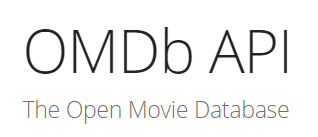With the Article Search API, you can search New York Times articles from Sept. 18, 1851 to today, retrieving headlines, abstracts, lead paragraphs, links to associated multimedia and other article metadata. Note: In URI examples and field names, italics indicate placeholders for variables or values. Brackets [ ] indicate optional items. Parentheses ( ) are not a convention — when URIs include parentheses, interpret them literally.
The Geographic API extends the Semantic API, using a linked data approach to enhance location concepts used in The New York Times' controlled vocabulary and data resources which combine them with the GeoNames database, an authoritative and free to use database of global geographical places, names and features.
The Semantic API complements the Articles API. With the Semantic API, you get access to the long list of people, places, organizations and other locations, entities and descriptors that make up the controlled vocabulary used as metadata by The New York Times (sometimes referred to as Times Tags and used for Times Topics pages). The Semantic API uses concepts which are, by definition, terms in The New York Times controlled vocabulary. Like the way facets are used in the Articles API, concepts are a good way to uncover articles of interest in The New York Times archive, and at the same time, limit the scope and number of those articles. The Semantic API maps to external semantic data resources, in a fashion consistent with the idea of linked data. The Semantic API also provides combination and relationship information to other, similar concepts in The New York Times controlled vocabulary.
Transit API can be used to obtain time-aggregated data representing moving the people between various spatial points within the Czech Republic. Having A - 'from' and B - 'to' points, the API can return count of people traveling from A to B or people that are from A and traveling to B, etc. The mobility data is based on moving mobile stations in O2 mobile network.
Socio-demo API can be used to obtain time-aggregated data representing groups of people on the given location in the Czech Republic. Having a location, the API can return count of people belonging to age group or gender aggregated by hours. The socio-demo data is based on presence of mobile stations in O2 mobile network.
Build secure and scalable custom apps for Online Booking. Our flexible API provides many options for availability and booking.
Take the API for a test drive. Just click on the Authorize button below and authenticate.
You can access our demo company profile if you are not a customer, or your own profile by using your assigned ClientId and Secret.
The API has two interfaces, consumer and setup.
- The consumer interface provides all the endpoints required for implementing consumer booking flows.
- The setup interface provides endpoints for profile configuration and setup.
Build secure and scalable custom apps for onboarding and setup. Our flexible API provides many options for configuration.
Take the API for a test drive. Just click on the Authorize button below and authenticate.
You can access our demo company profile if you are not a customer, or your own profile by using your assigned ClientId and Secret.
The API has two interfaces, consumer and setup.
- The consumer interface provides all the endpoints required for implementing consumer booking flows.
- The setup interface provides endpoints for profile configuration and setup.



